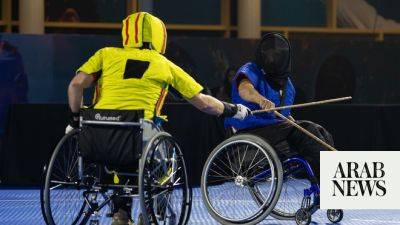Estonia: Where the old and the new embrace
Tartu is Estonia’s second-largest city and one of the European Capitals of Culture in 2024.
A university town, it’s home to Estonia's first theatre, its first newspaper was published and its first song festival was held.
From traditional folk dancing to modern art, Tartu has it all.
First on our stop was the creative space of Aparaaditehas – a former factory complex that's now a hip gathering spot for artists.
“I think it's a very vibrant city. The feeling is very youthful,” says Jaan Ulst Programme line manager for Tartu 2024.
Aparaaditehas also hosts artist spaces for International artists. In the Haki Gallery, Ukrainian artist Viktoria Berezina shows Euronews her work. Berezina fled her home in Kherson after the Russian invasion.
“I really like living here and existing in this creative environment. There is a very large community of artists here. It's a great chance to get to know each other, and communicate, to show my art and talk about what is happening in Ukraine,” Berezina says.
Modern Estonian culture is evolving with the times. In the south of the country in Setomaa
The Seto One of the country's oldest ethnic groups is trying to preserve its age-old traditions.
Arriving in Setomaa can feel a bit like stepping back in time. The region straddling the border with Russia is inhabited by the Seto people. They have their own dialect, religion and traditions they've fiercely maintained for centuries.
A hundred years ago, this was an absolutely 100% oral culture,” explains Helen Külvik, a Setomaa tour guide. “People were illiterate and every knowledge you had, you had to pass on orally.”
“I'm often thinking that it must have been like living in a musical, because Setos have songs for every occasion, for working, for herding, for








